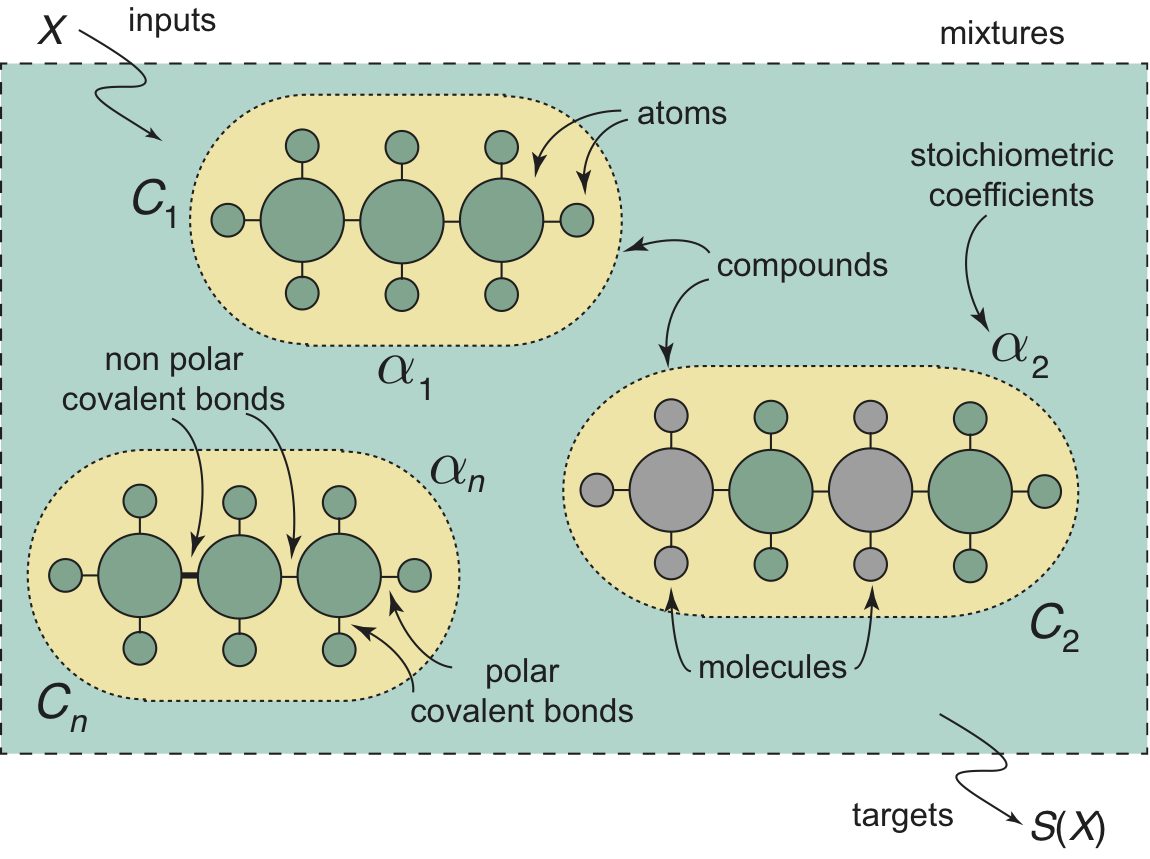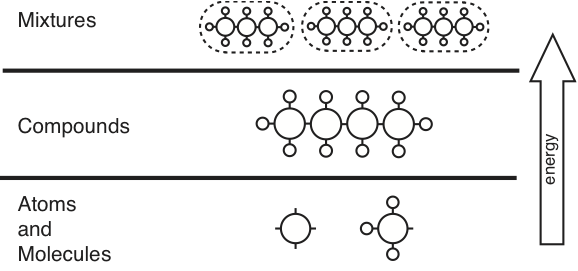Artificial organic networks (AON) is a class of computational learning algorithms that takes inspiration from chemical organic compounds. It offers improved algorithmic stability as well as partial understanding of data through obtained structures.
Naturally, organic compounds are formed by natural conditions that favor a certain atomic structure over the others. The optimal structure will be the one that minimizes the chemical energy on the structure, forming molecules. All these molecules respond to different environmental conditions and energy stability, originating different behaviors. Actually, the most stable structures in chemistry are those based on carbon. Thus, artificial organic networks mimics these molecular topologies to respond in a similar fashion.
Since artificial organic networks are based on the molecules previously described, they hold many similarities. One of the most important characteristics of AON is the ability of packaging information in structures that could be compared to molecules. This technique allows the creation of organized and optimized structures in terms of internal energy. They also preserve similar characteristics to organic compounds, such as: modularity, inheritance, organization and structural stability.
The technique proposes two representations: a graphic model for physical properties (topologies) and a mathematical model for the chemical properties (functions-like behaviors). To this end, learning definition and organization is based on chemical heuristics like the energy stability criteria.

Artificial organic networks define several components to build the topologies:
The technique also defines three types of relationships among components:
Artificial organic networks are based on the principle of minimizing the energy on the structure, resulting in a stable compound. Because of this, a three-level energy scheme is proposed, as shown below. It requires that atoms should be first use to build molecules. If a molecule is not enough, several molecules will be combined forming compounds. Lastly, compounds are mixed up together creating mixtures. Heuristic rules are employed to follow this scheme.

Depending on the type of artificial organic networks, different heuristics and components are implemented in the construction and the training algorithm. For example, see Artificial Hydrocarbon Networks.
This opens a new way to create learning algorithms.
More details can be found in the book:
Artificial Organic Networks - Artificial Intelligence Based on Carbon Networks (Springer, 2014).